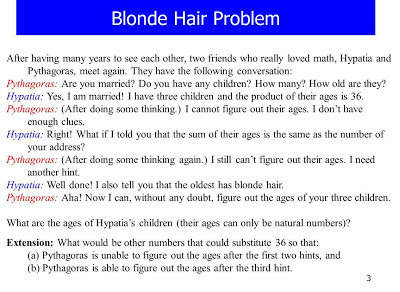Professional Tutor's opinion of the belief in young people, from the QISA website.
A lot of today's session comes from Teacher's Toolkit, by Paul Ginnis. One lesson this week, I will use the Lesson Planning Audit against one of my lessons.
We were also pointed again to Jackie Beere's book, the Perfect Oftsed Lesson.
Learning Objectives
- 2BA2 - to be able to
- bridging between previous lesson to today and beyond
- put 'previous lesson' section on 5 mins Lesson Plan
- think about 'purpose' column in terms of impact on learning
- could put double-sided sticky tape on the back of printed learning objectives so they can be stuck in... messy?
Lesson Planning
- higher level questions: Bloom
- think about time frame for teaching this area
- laminated mobile phones, write a text to their mum? ... might be problems with recording in book
- SA extension: smart arse!
Key Terms
- glossary stuck into back of book at the start - highlight as each word is covered?
- "key word" spotter: record in a class key words book
Plenary Idea
- "I am an expert at..." "To do this you need to..."
- "I need an expert for..."
- make sure there is a space for names!
Active Lessons
Negative Numbers
Giant number line in sports hall, get them to start at different places and then give sums, gives opportunity for some pupils to walk along the number line but some to have to work it out straight away - possibly in a different area?
Multiplication
Make giant multiplication grid, students in each 'box' of grid with a whiteboard, give sums so have to work as team to get final answer as each person has a job - differentiate by putting certain students in different spaces, then progress by moving around.











